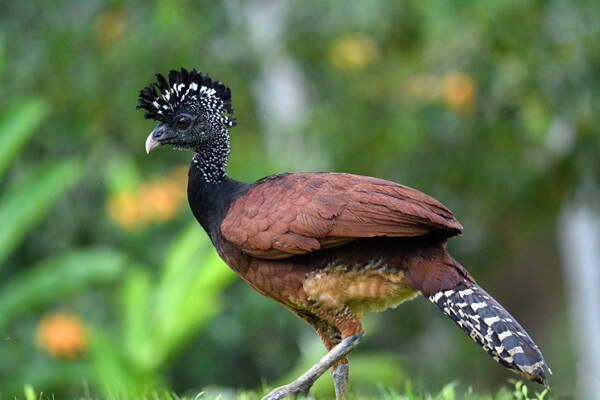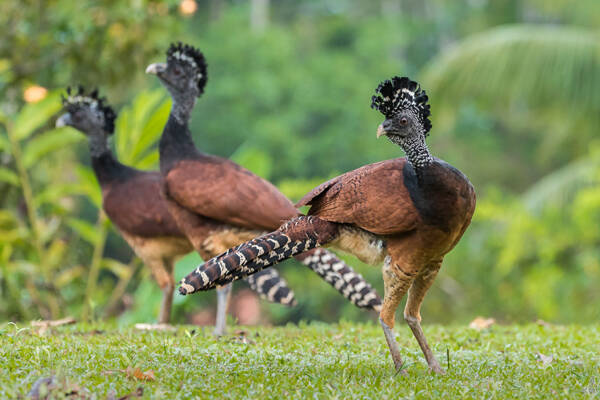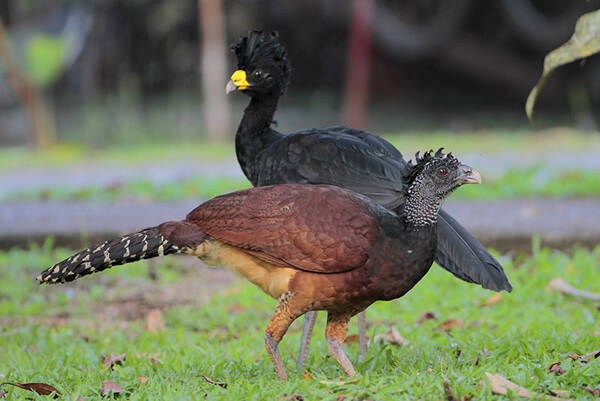Great Curassow
IUCN
LCBasic Information
Scientific classification
- name:Great Curassow
- Scientific Name:Great Curassow,Crax rubra
- Outline:Landfowl
- Family:Chickeniformes P.family P.Genus
Vital signs
- length:90-100 cm tall
- Weight:4.3-4.8kg
- lifetime:About 24 years
Feature
It is the northernmost species of Pheasant
Distribution and Habitat
The Great Crested pheasant is found in parts of Central and South America from Mexico to Ecuador. Belize, Colombia, Costa Rica, Ecuador, El Salvador, Guatemala, Honduras, Mexico, Nicaragua, Panama.
It inhabits moist, undisturbed evergreen broad-leaved forests and mangroves, as well as seasonally dry forests in some lower elevations.
Appearance
The Great Crested pheasant is a large bird, reaching a height of more than one meter. The male is 93 cm tall and weighs 4.3 to 4.8 kg. It has a striking curly crown, which is highly curled forward during the breeding season, and the feathers are unkempt and towering, which is instantly recognizable.
The male is black or bluish-purple and shiny. The snowy white of the abdomen contrasts sharply with the overlying feathers and tail, and the base of the beak is pale yellow with sarcoma.
The female is brown-red to chestnut brown, with a black and white head and neck. There are yellow nodules on the beak, and the feathers on the crown are curved. The female crested pheasant has three forms: markings on the neck, wings, wings and tail; The whole red form is russet brown, with a striped tail; The neck, wingspan, wings, and tail of the black form are black, with some markings on the wings. In most areas, only one or two forms occur, while some fall somewhere in between.
Details
The Great Curassow (Crax rubra) has two subspecies. The Great Crested pheasant is mixed with the blue-billed pheasant and the black pheasant.

The Great Crested pheasant lives in tropical and subtropical forest areas. In pairs or small groups, mainly active in trees, occasionally below the ground, diurnal. To stay as a bird.
The Great Crested pheasant is an omnivorous bird and, like other crested pheasant birds, spends a great deal of time searching for fruit, berries and seeds that have fallen to the ground, as well as large insects and the occasional small animal encountered in woodland. The diet includes seeds, leaves, fruits, and various insects, and occasionally small vertebrates such as frogs and lizards; Because its feces contain more seeds of various kinds of plants, it is also known as "sowing small skilled hands".

The male bird, leading his family, emits a high-pitched whistle-like whine at signs of danger. At other times, groups maintain contact with each other by using low pitched calls. When disturbed, this shy and cautious bird will often trot rather than fly away, and will also tree for protection.
The breeding period of big crested pheasants is from March to May. The nest is built in a tree branch or a hole in the tree, and the adult bird builds a hollow nest with leaves on the branch of the tree. The female bird lays two eggs each time, and the eggs are beautiful blue and green. It can fly in 3-4 days after it comes out of the shell. Sexual maturity at 2-3 years, maximum life expectancy of 24 years.

Listed on the International Union for Conservation of Nature (IUCN) 2012 Red List of Threatened Species ver 3.1 - Vulnerable (VU).
Listed in Appendix III of the Convention on International Trade in Endangered Species of Wild Fauna and Flora (CITES).
Listed in Appendices I, II and III of the Convention on International Trade in Endangered Species of Wild Fauna and Flora (CITES) 2019 edition Appendix III.
Protect wild animals and eliminate wild meat.
Maintaining ecological balance is everyone's responsibility!








